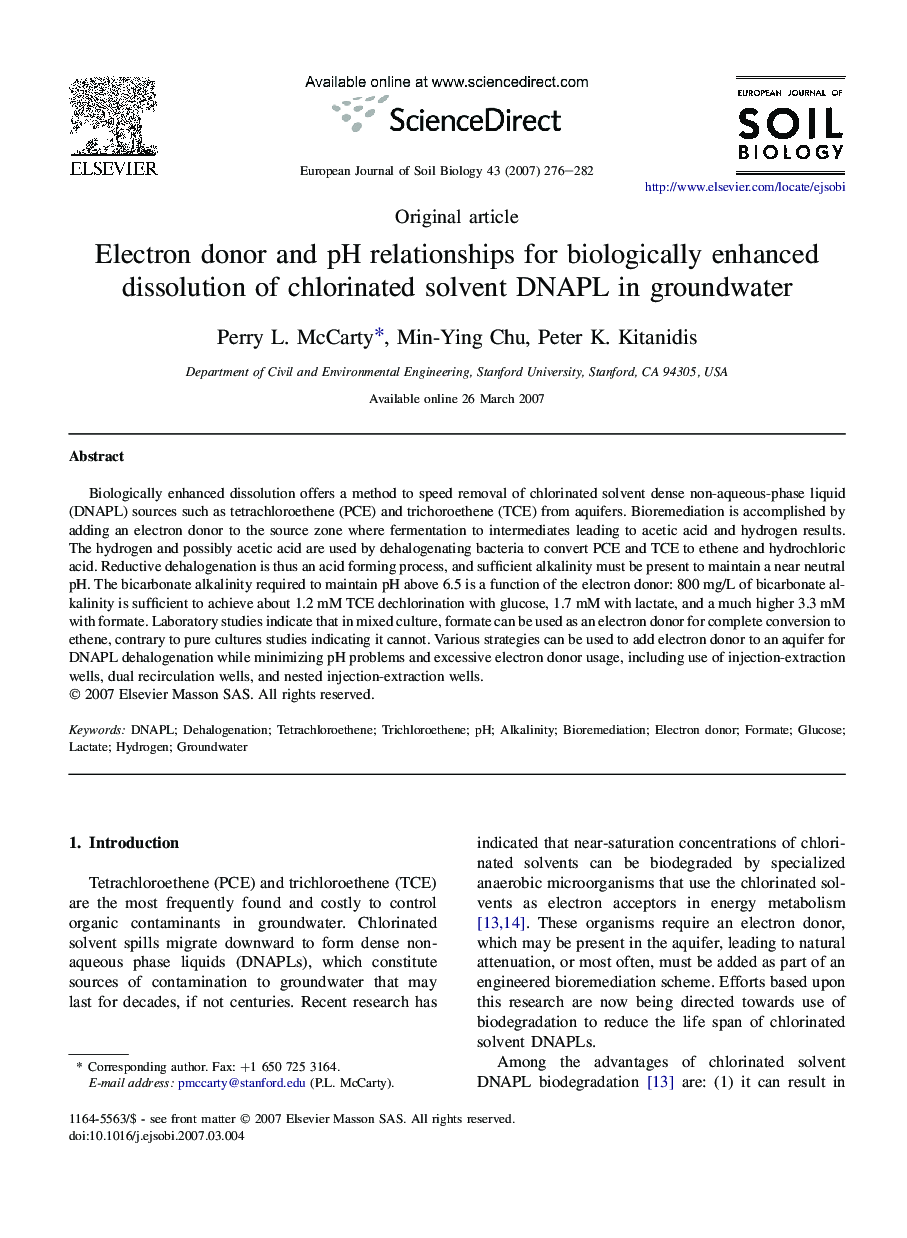| کد مقاله | کد نشریه | سال انتشار | مقاله انگلیسی | نسخه تمام متن |
|---|---|---|---|---|
| 4392396 | 1618166 | 2007 | 7 صفحه PDF | دانلود رایگان |

Biologically enhanced dissolution offers a method to speed removal of chlorinated solvent dense non-aqueous-phase liquid (DNAPL) sources such as tetrachloroethene (PCE) and trichoroethene (TCE) from aquifers. Bioremediation is accomplished by adding an electron donor to the source zone where fermentation to intermediates leading to acetic acid and hydrogen results. The hydrogen and possibly acetic acid are used by dehalogenating bacteria to convert PCE and TCE to ethene and hydrochloric acid. Reductive dehalogenation is thus an acid forming process, and sufficient alkalinity must be present to maintain a near neutral pH. The bicarbonate alkalinity required to maintain pH above 6.5 is a function of the electron donor: 800 mg/L of bicarbonate alkalinity is sufficient to achieve about 1.2 mM TCE dechlorination with glucose, 1.7 mM with lactate, and a much higher 3.3 mM with formate. Laboratory studies indicate that in mixed culture, formate can be used as an electron donor for complete conversion to ethene, contrary to pure cultures studies indicating it cannot. Various strategies can be used to add electron donor to an aquifer for DNAPL dehalogenation while minimizing pH problems and excessive electron donor usage, including use of injection-extraction wells, dual recirculation wells, and nested injection-extraction wells.
Journal: European Journal of Soil Biology - Volume 43, Issues 5–6, November–December 2007, Pages 276–282